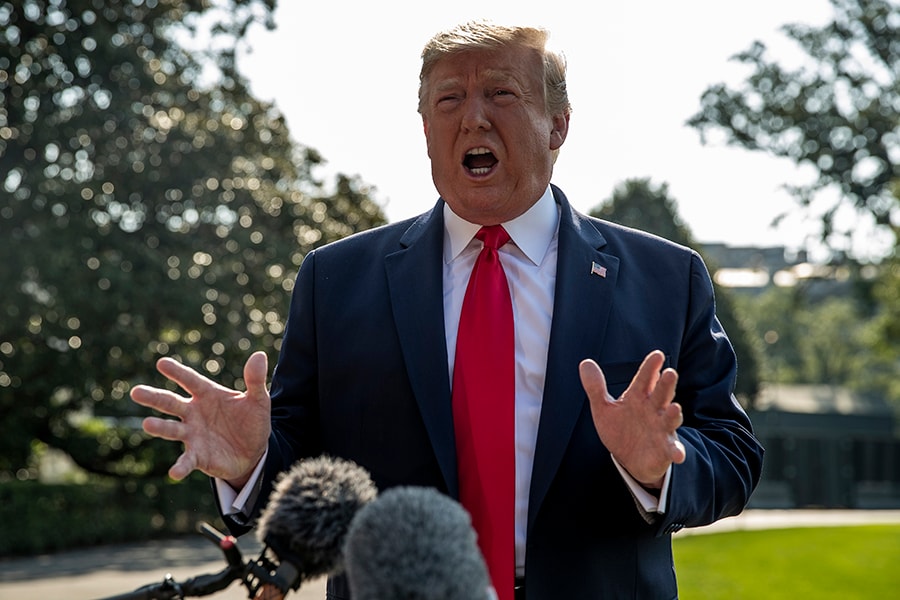
Trump's push to bring back US jobs shows limited results
Statistics from the US government and other sources do not support Trump's claim about his policies' effectiveness in drawing investment and jobs from abroad
 President Donald Trump speaks to reporters as he leaves the White House on Wednesday morning, Aug. 7, 2019. The nonprofit Reshoring Initiative found fewer than 30,000 jobs that companies said they would relocate to the United States because of Trump’s tariffs
President Donald Trump speaks to reporters as he leaves the White House on Wednesday morning, Aug. 7, 2019. The nonprofit Reshoring Initiative found fewer than 30,000 jobs that companies said they would relocate to the United States because of Trump’s tariffsImage: Anna Moneymaker/The New York Times
WASHINGTON — From tax cuts to relaxed regulations to tariffs, each of President Donald Trump’s economic initiatives is based on a promise: to set off a wave of investment and bring back jobs that the president says the United States has lost to foreign countries.
“We have the greatest companies anywhere in the world,” Trump said at the White House recently. “They’re all coming back now. They’re coming back to the United States.”
Trump’s tax cuts unquestionably stimulated the U.S. economy in 2018, helping to push economic growth to 2.5% for the year and fueling an increase in manufacturing jobs. But statistics from the government and other sources do not support Trump’s claim about his policies’ effectiveness in drawing investment and jobs from abroad.
Foreign investment in the United States grew at a slower annual pace in the first two years of Trump’s tenure than during Barack Obama’s presidency, according to Commerce Department data released in July. Growth in business investment from all sources, foreign and domestic, accelerated briefly after Trump signed a $1.5 trillion tax-cut package in late 2017 but then slowed. Investment growth turned negative this spring, providing a drag on economic output.
In Trump’s first two years in office, companies announced plans to relocate just under 145,000 factory jobs to the United States, according to data and modeling by the Reshoring Initiative, a nonprofit group. That is a record high in the group’s data, which dates back to the late 1980s, but it adds up to less than one month of average job gains in the United States in its decadelong expansion. More than half of those jobs — about 82,000 — were announced in 2017, before Trump’s tax cuts took effect.
Moreover, the Reshoring Initiative data show fewer than 30,000 jobs that companies say they will relocate to the United States because of Trump’s tariffs on imported steel, aluminum, solar panels, washing machines and a variety of Chinese goods. Researchers at A.T. Kearney said in July that Trump’s trade policies, including tariffs, had pushed factory activity not to the United States but to low-cost Asian countries other than China, like Vietnam.
©2019 New York Times News Service




